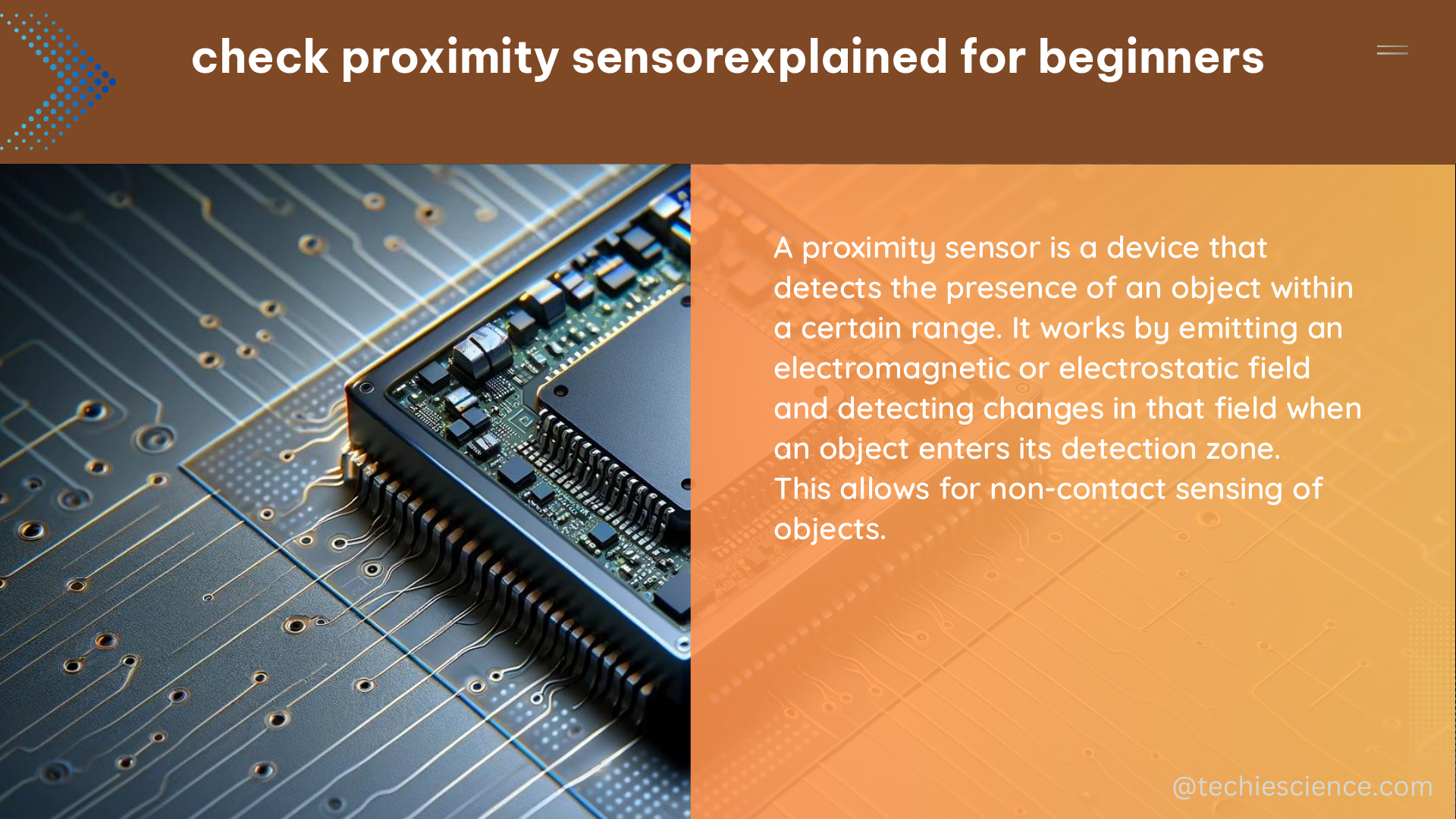Proximity sensors are non-contact detection devices that can sense the presence of objects within a specific range without physical contact. These sensors are widely used in industrial automation, manufacturing, robotics, and various other applications. Proximity sensors can be categorized into three main types: capacitive, ultrasonic, and inductive. This comprehensive guide will delve into the technical details of capacitive proximity sensors, their working principles, applications, and testing procedures.
Understanding Capacitive Proximity Sensors
Capacitive proximity sensors are versatile non-contact detection devices that can sense the presence of a wide range of materials, including metals, plastics, liquids, and even organic materials. These sensors work by emitting an oscillating electric field from the sensing face, which is affected by the introduction of a target object. The internal components of a capacitive sensor include the sensing face, indicator lights, wiring for power and outputs, and adjustable controls for setting sensitivity thresholds.
Sensing Distance and Sensitivity Adjustment
The sensing distance of capacitive proximity sensors is a crucial factor, with different models offering detection ranges from just a few millimeters to several centimeters. The detection threshold can be optimized and tuned for specific application needs by adjusting the sensitivity threshold. This allows the sensor to be tailored to the specific requirements of the application, ensuring reliable and accurate object detection.
Output Types: PNP and NPN
Capacitive proximity sensors are available in two main output types: PNP and NPN. The choice between these output types is essential, as it depends on the downstream devices that need to be interfaced with the sensor. PNP sensors provide a positive voltage signal when an object is detected, while NPN sensors provide a ground signal. Understanding the requirements of the connected devices is crucial when selecting the appropriate output type.
Applications of Capacitive Proximity Sensors
Capacitive proximity sensors have a wide range of applications, including:
- Level monitoring for hoppers and tanks: These sensors can detect the presence of materials, liquids, or solids in containers, ensuring efficient monitoring and control of fill levels.
- Part detection on assembly lines: Capacitive sensors can reliably detect the presence or absence of parts on conveyor belts or robotic arms, preventing disruptions and downtime in manufacturing processes.
- Robotic arm positioning: Capacitive sensors can be used to detect the position of robotic arms, enabling precise control and coordination in automated systems.
- Conveyor belt monitoring: Capacitive sensors can detect the presence of objects on conveyor belts, ensuring smooth operation and preventing jams or disruptions.
Testing Capacitive Proximity Sensors

Proper testing of capacitive proximity sensors is essential to ensure their reliable operation. The testing process typically involves checking for power and signal.
Checking Power
For a 24-volt DC or 120-volt AC capacitive proximity sensor, you can test for power by setting the multimeter to the proper voltage setting. This will allow you to verify that the sensor is receiving the correct power supply.
Checking Signal
To test the signal, it is important to be on the proper reference. Capacitive proximity sensors can be either PNP or NPN, and you should ensure that you are testing for the correct type. PNP sensors provide a positive voltage signal when an object is detected, while NPN sensors provide a ground signal.
By following these steps, you can effectively test the functionality of your capacitive proximity sensor and ensure that it is operating as intended.
Conclusion
Capacitive proximity sensors are versatile non-contact detection devices that can sense the presence of a wide range of materials without physical contact. Understanding their working principles, sensing distance, sensitivity adjustment, and output types is crucial for selecting the right sensor for your application. Additionally, proper testing of these sensors is essential to ensure reliable operation and prevent disruptions in manufacturing processes. By following the guidelines outlined in this comprehensive guide, you can effectively utilize capacitive proximity sensors in your industrial, automation, or robotics applications.
References:
- Technical Explanation for Proximity Sensors: https://www.ia.omron.com/data_pdf/guide/41/proximity_tg_e_6_2.pdf
- What is Quantitative Data?: https://careerfoundry.com/en/blog/data-analytics/what-is-quantitative-data/
- How to test a proximity sensor – YouTube: https://www.youtube.com/watch?v=GOD0zjagR6E
- A Complete Guide to Proximity Sensors – RS Components: https://uk.rs-online.com/web/content/discovery/ideas-and-advice/proximity-sensors-guide
- Capacitive Proximity Sensor Explained | How do they work? | Wiring: https://www.youtube.com/watch?v=jCzEVNIkFmc

The lambdageeks.com Core SME Team is a group of experienced subject matter experts from diverse scientific and technical fields including Physics, Chemistry, Technology,Electronics & Electrical Engineering, Automotive, Mechanical Engineering. Our team collaborates to create high-quality, well-researched articles on a wide range of science and technology topics for the lambdageeks.com website.
All Our Senior SME are having more than 7 Years of experience in the respective fields . They are either Working Industry Professionals or assocaited With different Universities. Refer Our Authors Page to get to know About our Core SMEs.